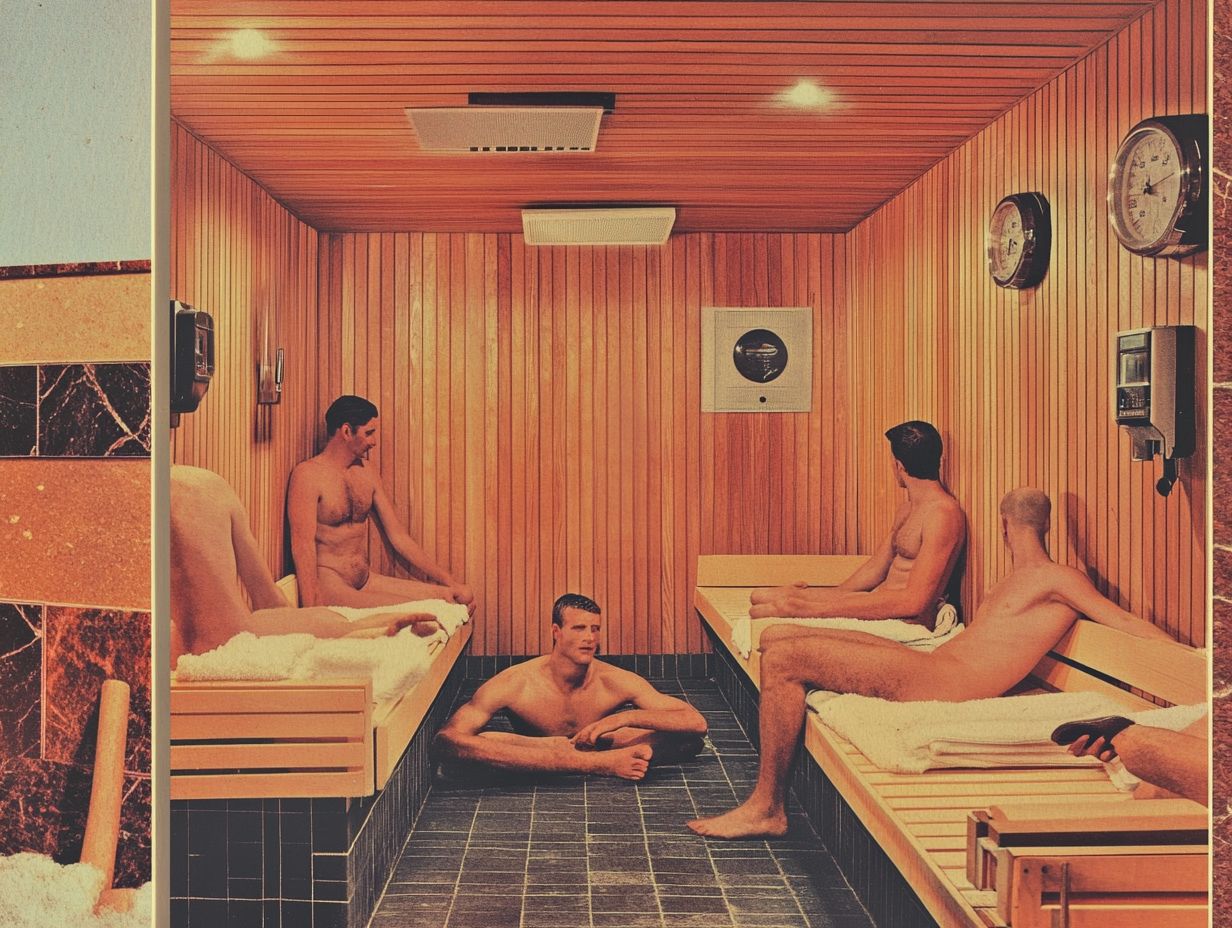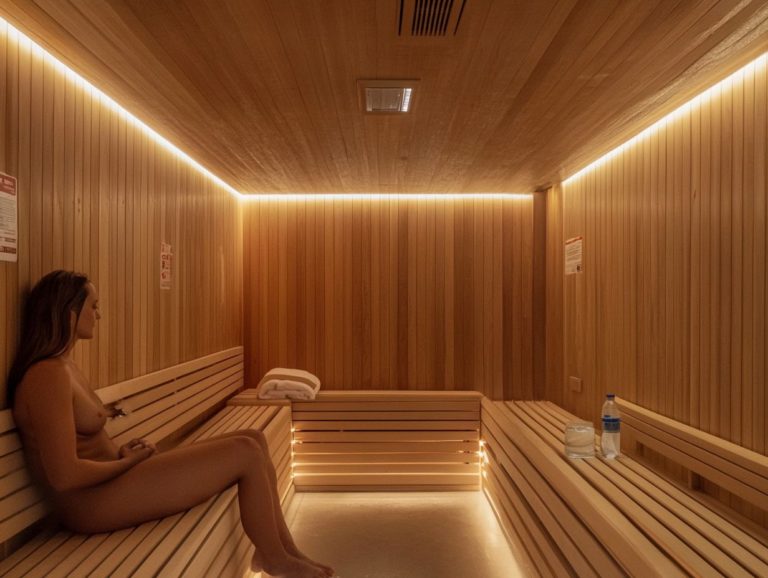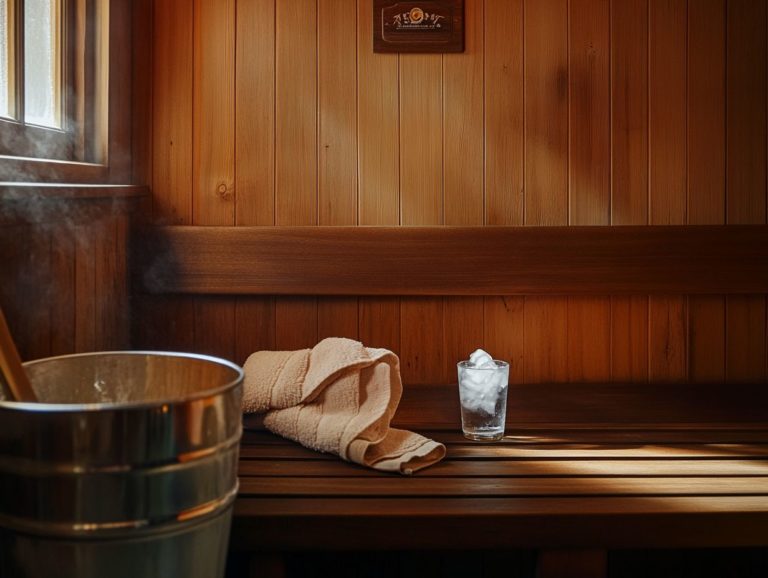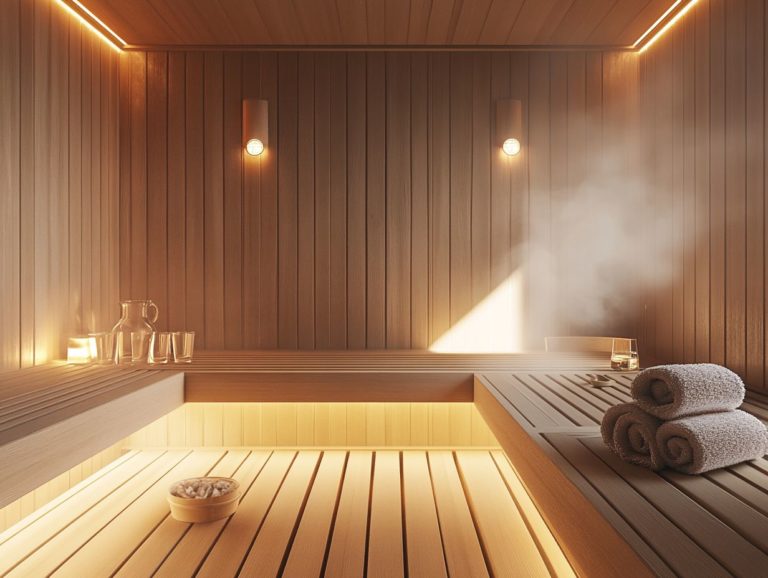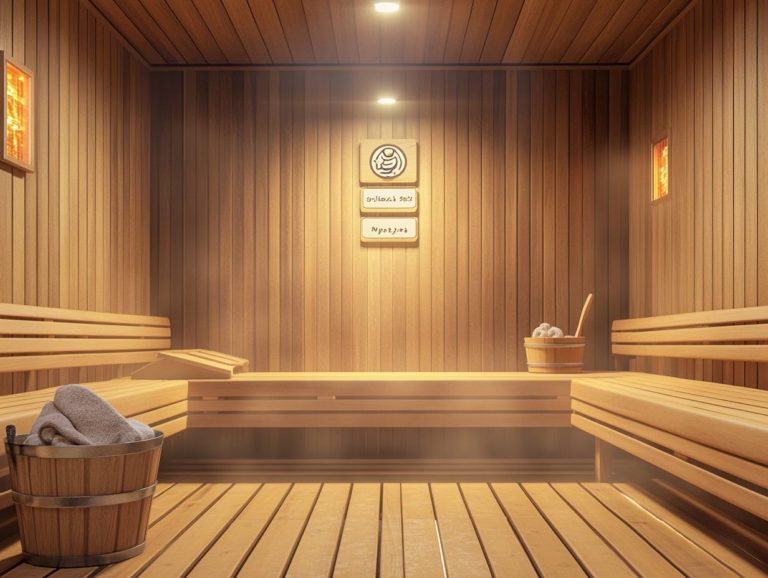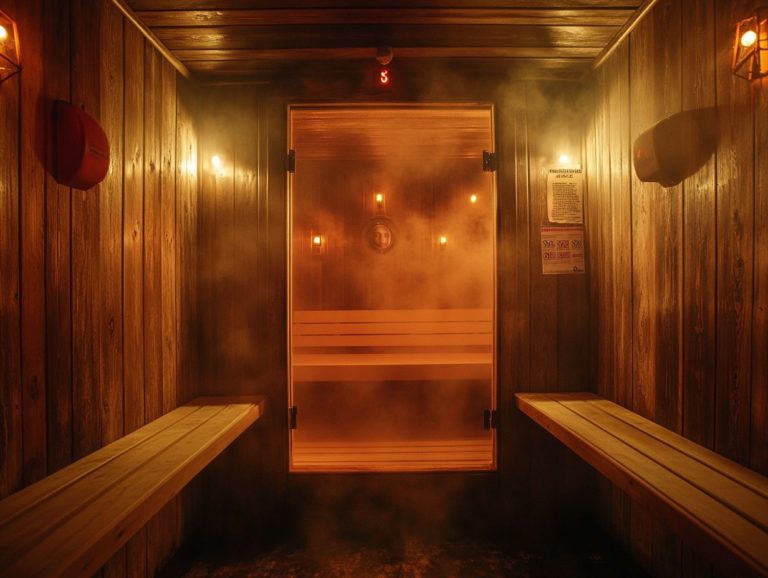The Evolution of Sauna Safety Practices
Saunas have always been revered for their relaxing and therapeutic benefits. However, if you take a closer look at their history, you’ll discover they offer much more than just a space to unwind.
From their ancient roots to their cultural significance, saunas have transformed alongside evolving safety practices that reflect changing societal norms.
Dive into the past to uncover risks, modern regulations, and cutting-edge technologies that illustrate how sauna safety has evolved over time. This article will guide you through the captivating journey of sauna safety, ensuring that your next session is not only enjoyable but also secure.
Contents
- Key Takeaways:
- The History of Saunas
- Sauna Safety Concerns in the Past
- Modern Sauna Safety Standards
- Regulations and Guidelines
- Common Sauna Safety Precautions
- Best Practices for Sauna Use
- Innovations in Sauna Safety
- The Future of Sauna Safety
- Frequently Asked Questions
- 1. What is the history of sauna safety practices?
- 2. How have sauna safety practices changed over time?
- 3. What are some common sauna safety risks?
- 4. Are there any safety precautions to take before using a sauna?
- 5. How can I ensure a safe sauna experience?
- 6. Are there any laws or regulations regarding sauna safety?
Key Takeaways:
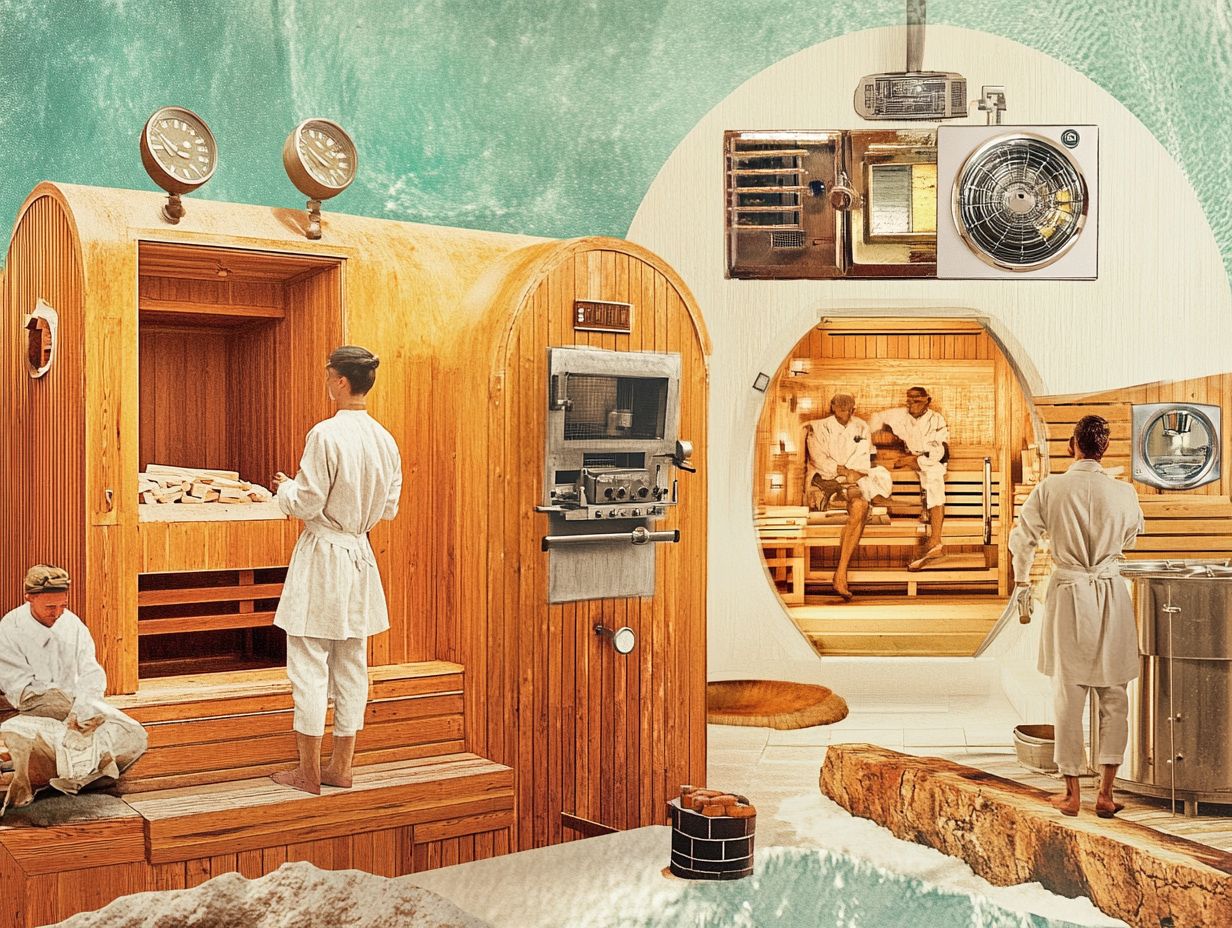
- Saunas have a long history and cultural significance, but safety concerns have evolved over time.
- New regulations and guidelines have been established to improve sauna safety standards.
- Innovations in technology have led to improved safety features in modern saunas.
The History of Saunas
The history of saunas presents a captivating journey through time, featuring ancient practices that have transformed into the wellness rituals you may recognize today. Originating in Finland, the traditional Finnish sauna and smoke saunas were integral to community life and cultural heritage.
Saunas have spread beyond their original locations, becoming a beloved fixture in societies around the globe. They now incorporate diverse steam rooms and therapeutic practices, including the use of heat to relax muscles and relieve pain, all designed to promote relaxation and enhance health benefits.
Origins and Cultural Significance
The origins of saunas stretch back thousands of years, steeped in the rich cultural significance they held for ancient civilizations, particularly in Northern Europe and Finland.
In Finland, saunas are more than just warm spaces; they transform into communal havens where families and friends gather to unwind and share stories, strengthening bonds that extend far beyond the physical space.
Smoke saunas, in particular, occupy a cherished spot in this tradition, showcasing a wood-burning method of heat generation that creates a unique aromatic atmosphere, believed to enhance both relaxation and health.
The cultural heritage surrounding sauna rituals emphasizes mindfulness and wellness. Engaging in these practices often includes rituals like using birch branches for gentle cleansing and the ceremonial pouring of water onto hot stones to generate steam, invigorating both body and spirit.
Sauna Safety Concerns in the Past
Historically, sauna safety concerns arose from outdated practices that often overlooked crucial health considerations. This oversight profoundly affected both community life and individual health routines, particularly in traditional methods such as smoke saunas and hammam.
Old Practices and Risks
Old sauna practices often came with risks due to inadequate safety measures and a limited understanding of individual health impacts. This was especially evident in traditional methods where safety protocols were not prioritized.
For example, many traditional sauna enthusiasts were exposed to excessive heat for extended periods, leaving them vulnerable to heat exhaustion or dehydration. These earlier methods frequently overlooked the critical need for proper ventilation, allowing excess humidity to linger and potentially heightening the risks of respiratory issues. To ensure safety, it’s important to understand sauna safety regulations, a concern echoed in modern sauna technology.
In contrast, contemporary sauna designs prioritize well-ventilated spaces, creating a controlled environment that places user safety at the forefront. By recognizing the significance of moderating temperatures and incorporating breaks, sauna experiences have evolved, aligning more closely with modern sauna safety and promoting overall well-being.
Modern Sauna Safety Standards
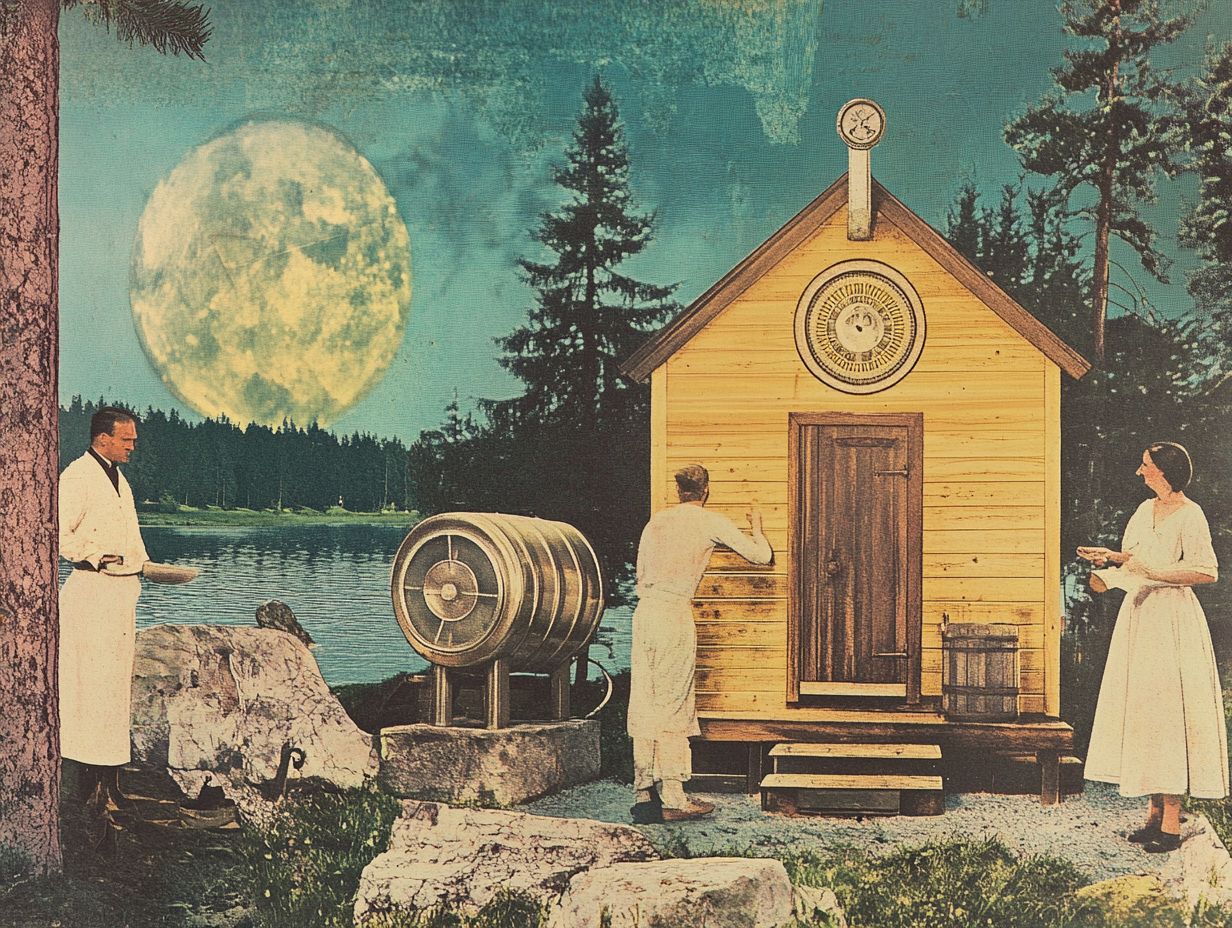
Today, modern sauna safety standards are incredibly advanced, embracing regulations and guidelines designed to prioritize your safety as you enjoy the therapeutic benefits of diverse sauna types, including infrared saunas and electric sauna models.
Explore the world of saunas to learn more about effective safety practices and how to enhance your relaxation experience!
Regulations and Guidelines
Regulations and guidelines for modern saunas are carefully designed to keep your safety in mind while enhancing your overall experience through clear recommendations.
These frameworks cover a variety of sauna types, including infrared and electric saunas, helping you understand the unique benefits and limitations of each option. For instance, infrared saunas operate at lower temperatures, offering deep tissue relaxation and potential detoxification, while meeting specific emissions standards for safety.
Electric saunas have strict electrical codes that govern installation and maintenance, which affect how facilities incorporate them into wellness programs. Such regulations protect you as a user and build a culture of informed sauna practices, maximizing health benefits while minimizing risks. To ensure safety, it’s crucial to follow guidelines outlined in sauna safety best practices.
Common Sauna Safety Precautions
It s vital to know common sauna safety precautions to fully enjoy the many health benefits. By following these guidelines, you enhance your experience and contribute to a respectful and positive community atmosphere.
Practicing proper sauna etiquette allows you to enjoy the warmth while building a vibrant community of health enthusiasts.
Best Practices for Sauna Use
Following best practices for sauna use significantly improves your experience and maximizes the health benefits of regular sessions. Aim for sessions lasting between 15 to 20 minutes, adjusted for your comfort level and experience, to enjoy the detoxification and relaxation effects.
The ideal temperature setting is usually between 150 F and 195 F, striking a balance between warmth and safety. Remember fundamental sauna etiquette by showering before entering to maintain cleanliness and keeping conversations quiet to respect fellow users.
By adhering to these practices, you promote good health and foster a sense of community and mutual respect among fellow sauna enthusiasts.
Innovations in Sauna Safety
Recent innovations in sauna safety have introduced new technologies and features, enhancing your experience while prioritizing health and well-being in modern saunas.
New Technologies and Features for Sauna Safety
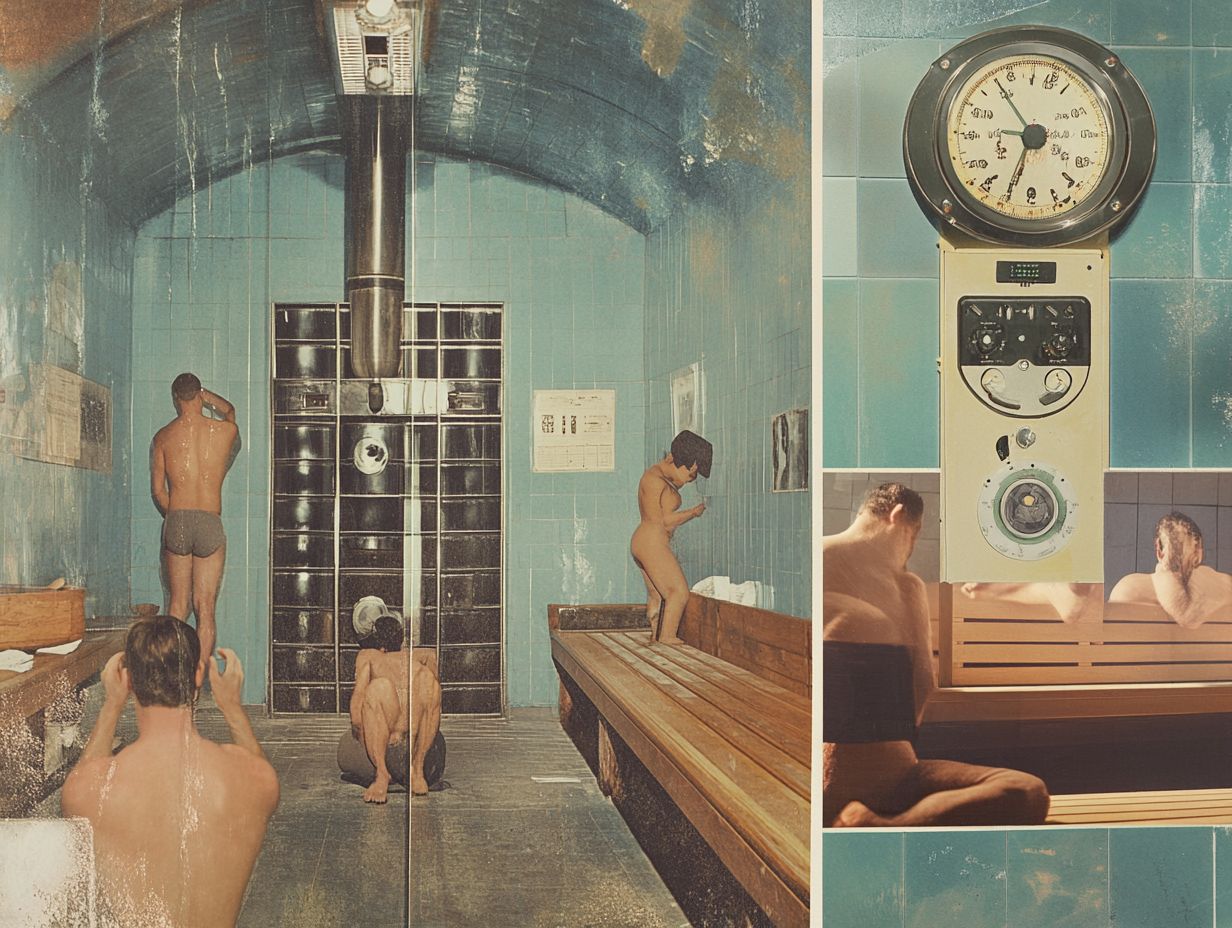
New technologies and features for sauna safety are constantly emerging, designed to boost your health benefits and comfort.
These innovations include automated temperature controls, which are automatic systems that keep the sauna at a steady temperature, preventing overheating and allowing you to fully relax.
Enhanced ventilation systems provide optimal air circulation, reducing humidity levels and creating a more inviting space.
Such features elevate your sauna experience and are crucial for improving cardiovascular health, relieving stress, and treating skin conditions.
With these advancements in sauna technology, you can enjoy greater peace of mind, knowing your wellness journey is supported by cutting-edge technology focused on your safety.
The Future of Sauna Safety
The future of sauna safety offers exciting possibilities, with predictions leaning toward advanced technologies, like automated monitoring systems, that will enhance your well-being and amplify the health benefits you can experience.
To learn more about sauna safety practices, visit your nearest sauna today!
Predictions and Possibilities for Sauna Safety Advancements
Predictions for the future of sauna safety indicate that you can expect increasingly sophisticated technologies designed to enhance both your safety and comfort.
Innovations in sensors devices that detect changes in the sauna’s environment and automated monitoring systems, technology that tracks sauna conditions without manual input, are set to become essential. Understanding the impact of environment on sauna safety will improve your sauna experience and help meet new safety regulations.
As community expectations change, there will likely be a heightened focus on using eco-friendly materials and designs that minimize health risks. This blend of advanced safety features and rising public awareness will create a more secure and enjoyable sauna environment for you to enjoy.
Frequently Asked Questions
1. What is the history of sauna safety practices?
The evolution of sauna safety practices dates back to ancient times, with the first saunas being used by the Finnish people for health and spiritual cleansing purposes. However, it wasn’t until the 20th century that sauna safety practices became more formalized and regulated.
2. How have sauna safety practices changed over time?
In the past, saunas were heated with wood-burning stoves and lacked proper ventilation, which posed a risk for fire and carbon monoxide poisoning. Today, saunas are equipped with electric or gas heaters and must meet strict safety standards for ventilation and temperature control. Understanding sauna safety is crucial for ensuring a safe experience.
3. What are some common sauna safety risks?
Some common sauna safety risks include burns from hot surfaces, dehydration from excessive sweating, and slips and falls from wet floors. Always follow safety guidelines to enjoy your sauna time safely!
4. Are there any safety precautions to take before using a sauna?
Absolutely! Taking a shower before using the sauna helps keep it clean and safe. It is also important to stay hydrated and limit your time in the sauna to prevent dehydration. Engaging in sauna rituals can also enhance the overall experience.
5. How can I ensure a safe sauna experience?
To ensure a safe sauna experience, always follow the manufacturer’s instructions and safety guidelines. Avoid using the sauna alone, and have a timer or clock within reach to monitor your time. It is also important to have an emergency plan in case of any accidents. Incorporating sauna etiquette enhances community life with social gatherings.
6. Are there any laws or regulations regarding sauna safety?
Yes, strict laws and regulations are in place to keep you safe in the sauna! In the United States, the Occupational Safety and Health Administration (OSHA) sets standards for workplace saunas, while the Consumer Product Safety Commission (CPSC) regulates currently available saunas sold for personal use. Regulations help maintain sauna culture and protect users during their wellness routines.
Ready to dive into a safer sauna experience? Follow these tips and enjoy every moment!

